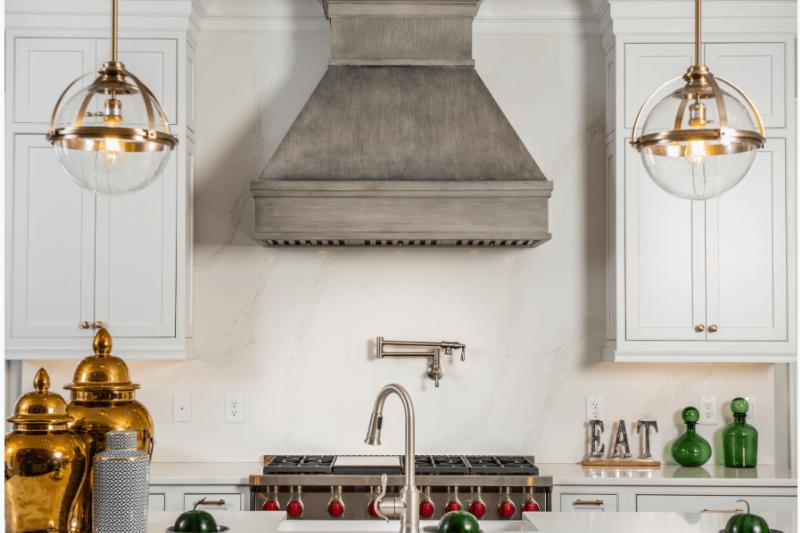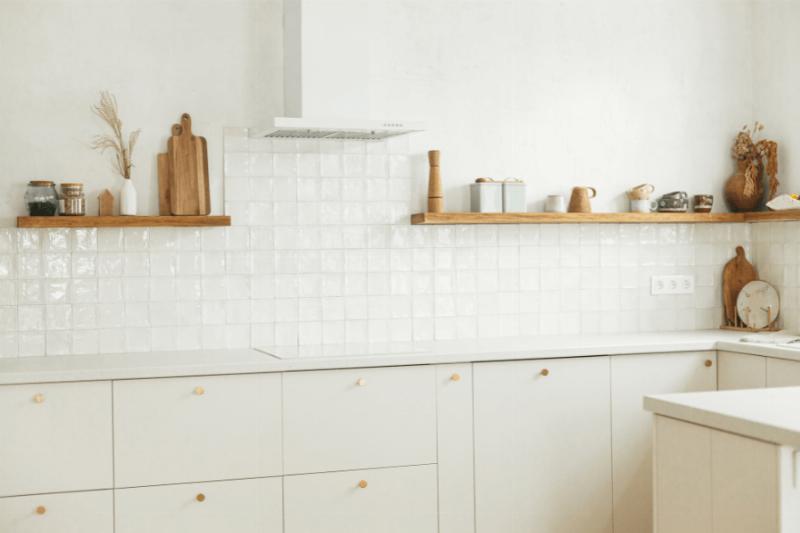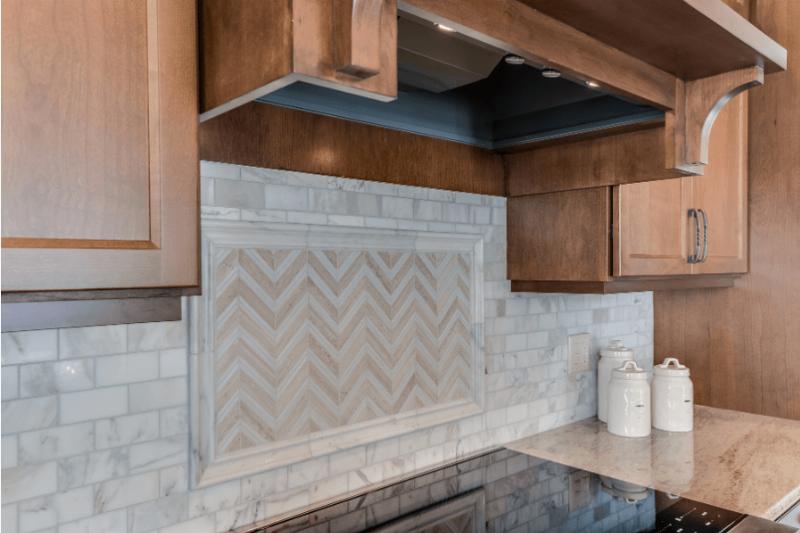So, your kitchen’s feeling a bit blah, huh? No worries. You don’t need much cash or endless hours to renovate it.
Removing the old kitchen backsplash with a new one is a great way to make it look better. A new backsplash can enhance the cabinet’s look and make your old kitchen feel fresh again. But, before you start removing the old kitchen backsplash, it’s smart to know how to do it without messing up the wall behind it.
We are a Smart Remodeling LLC team that offers renovation services for home and commercial sites. So, you can rest assured that the information you are getting is based on our decades of experience and field knowledge.
Now, grab your toolkit and follow us along!
Part 1: How to Remove Tile Backsplash Without Destroying Wall?

Follow the steps below to remove your kitchen backsplash successfully and prepare the wall for a fresh new design. Don’t forget to take your time and work carefully to avoid damaging the surrounding areas.
What You’ll Need
Renovating hero multi-tool or similar tool for tile removal
Grout removal disc
Vacuum attachment for cleanliness
Box cutter or utility knife
Rubber mallet
Scraper
Hammer
Gloves for safety
Plasterboard (to replace old material)
Joint compound
Plasterboard screws
Spirit level
Stanley knife or box cutter
Sandpaper (120 grit)
Sanding block
Drywall tape
Broad knife or trowel
Primer
Instructions to Follow
|
Project Overview |
|
|
Work Time |
4-5 hours |
|
Total Time |
1 day |
|
Skill Level |
Intermediate |
|
Est. Cost |
Approx. $150 |
Step 1: Preparation
In the first step, assess your kitchen and gather all the necessary tools and materials. Wear protective gear like a dust mask, glasses, and gloves to stay safe during the process.
Step 2: Protecting the Surrounding Area
To safeguard the counter and surrounding area, follow these instructions.
Insert stoppers into the sink to block tiles from falling into the drain.
Cover the counters with cardboard and secure them in place with tape.
Place plastic sheeting on the floor to catch any debris.
Minimize scattered tile shards by using tape to enclose the area with plastic.
Step 3: Removing Grout and Silicone
Score the grout around the tiles using a box cutter or utility knife. This step is essential so the tiles have less tension and can snap away easily.
Step 4: Breaking and Removing Tiles
Now comes the fun part: breaking down the tiles. Tap the tiles gently with a rubber mallet to remove them from the wall. Then, use a hammer and scraper to remove the tiles carefully.
Start from one corner and work your way across the backsplash. Be cautious not to damage the underlying plasterboard while removing the tiles.
For larger format tiles, you may need to break them into sections to remove them altogether.
Step 5: Handling the Plasterboard
Be cautious around areas with power points and wiring. Use a spirit level to ensure the area is level for plasterboard installation. Otherwise, any unevenness can affect the final result.
Tip: If you do it for the first time yourself, avoid the tiles with power points and fine lines attached to them. You need an electrician to pull these out and cap them off for you.
Step 6: Measuring and Cutting New Plasterboard
Cutting the plasterboard is a breeze. Measure and cut the new plasterboard to fit the removed backsplash area. Mark the lines using a pencil and metal ruler, then score them with a Stanley knife or box cutter. Using a plaster knife to snap along the scored line to cut an L-shape.
Finally, ran the knife along the back edge to cut through the paper, leaving a clean cut. That’s the trick to cutting plasterboard effectively.
Step 7: Cleaning Up
Vacuum debris and dust from the workspace using a vacuum attachment to keep the area clean and safe. Remove any remaining nails, screws, or adhesive residue from the wall using a scraper or utility knife.
Ensure the area is clean and ready for plasterboard installation before proceeding to the next step.
Step 8: Installing the Plasterboard
Use plasterboard screws to secure the new plasterboard in place. Pre-drill and countersink the screws for a secure fit.
Step 9: Pre-Fill Joints
Apply joint compound to the joints between the new plasterboard and existing walls. To promote adhesion, score the edges of the plasterboard before applying the compound.
Step 10: Tape Joints
Place drywall tape over the joints and press it into the joint compound. Use a broad knife or trowel to smooth out any excess compound.
Step 11: Apply Joint Compound
Apply additional coats of joint compound over the taped joints, feathering the edges for a smooth finish. Allow each coat to dry before sanding and applying the next.
Step 12: Sand and Prime
Sand the dried joint compound smooth with sandpaper and a sanding block. Vacuum up any dust, then apply a coat of primer to prepare the surface for tiling.
Part 2: How to Remove Glass Kitchen Backsplash?

We have discussed a method for removing tile backsplashes; now, let’s discuss glass backsplashes. We highly recommend seeking professional assistance to remove glass backsplashes for the best results.
However, if you want to do it yourself, follow the instructions below to remove the glass kitchen backsplash.
1. Remove Silicone Seal
The first step is to remove the silicone seal. Use a blade or knife to carefully remove the silicone seal around the edges of the glass panels.
2. Remove Glass Panels
Next, gently use chisels or wedges to pry the glass panels away from the wall. Exercise caution and wear protective eyewear and gloves, especially if you lack experience working with toughened glass.
Use strong suction pads to pull off large glass panels from the wall safely.
3. Clean the Wall Surface
After removing all the glass panels, clean off any silicone or adhesive residue from the wall. If necessary, replaster the wall to achieve a smooth and level surface in preparation for installing a new backsplash.
Part 3: When to Call an Expert?
If removing the tiles from the plasterboard becomes too difficult, one practical solution is to remove both the tiles and the plasterboard backing as a single unit. This method involves removing the tiles and the underlying plasterboard in one piece.
A professional general contractor or a full-service tile installation company can handle this task for you. They can efficiently remove a stubborn tile backsplash and reconstruct the area with new drywall, ready for a fresh tile installation.
Here, Smart Remodeling LLC is a smart choice to contact for. We are stationed in Houston, Texas, and offer professional Home and kitchen remodeling services.
Our team gives comprehensive remodeling services, including backsplash installation and drywall reconstruction. By entrusting your project to Smart Remodeling LLC, you can expect high-quality workmanship, attention to detail, and a commitment to customer satisfaction.
Contact us today to discuss your project and discover how our services can transform your space professionally and precisely.
Wrapping Up
Removing a kitchen backsplash seems daunting. However, with the right tools, materials, and techniques, you can do it efficiently and effectively. By following the steps outlined above and taking the necessary precautions, you can safely remove your kitchen backsplash without damaging the underlying walls. Remember to take your time, work carefully, and seek professional assistance if needed.
If you want to learn about kitchen backsplash installation, explore our article on DIY installation, measuring kitchen backsplash tiles, or painting.






